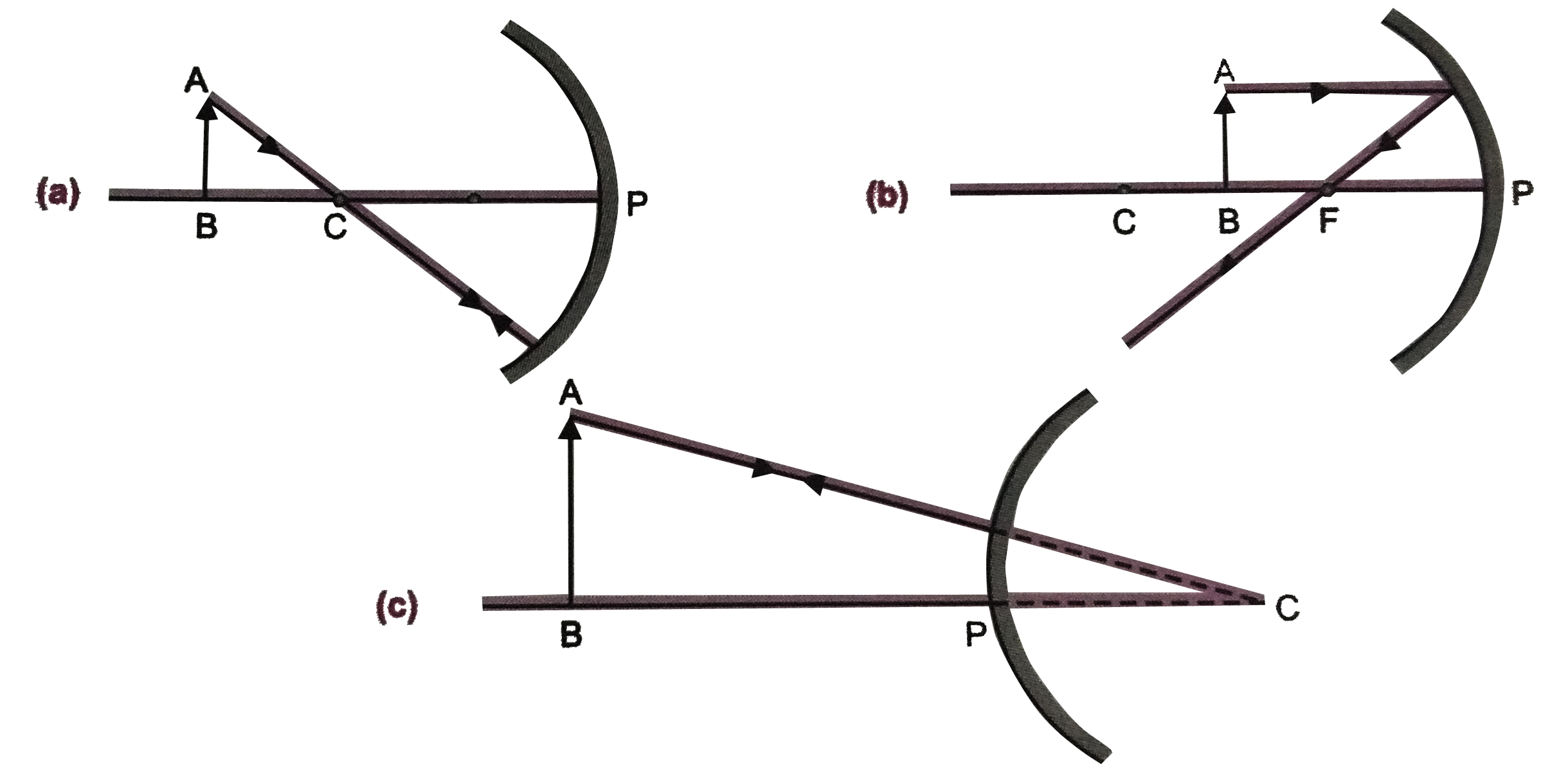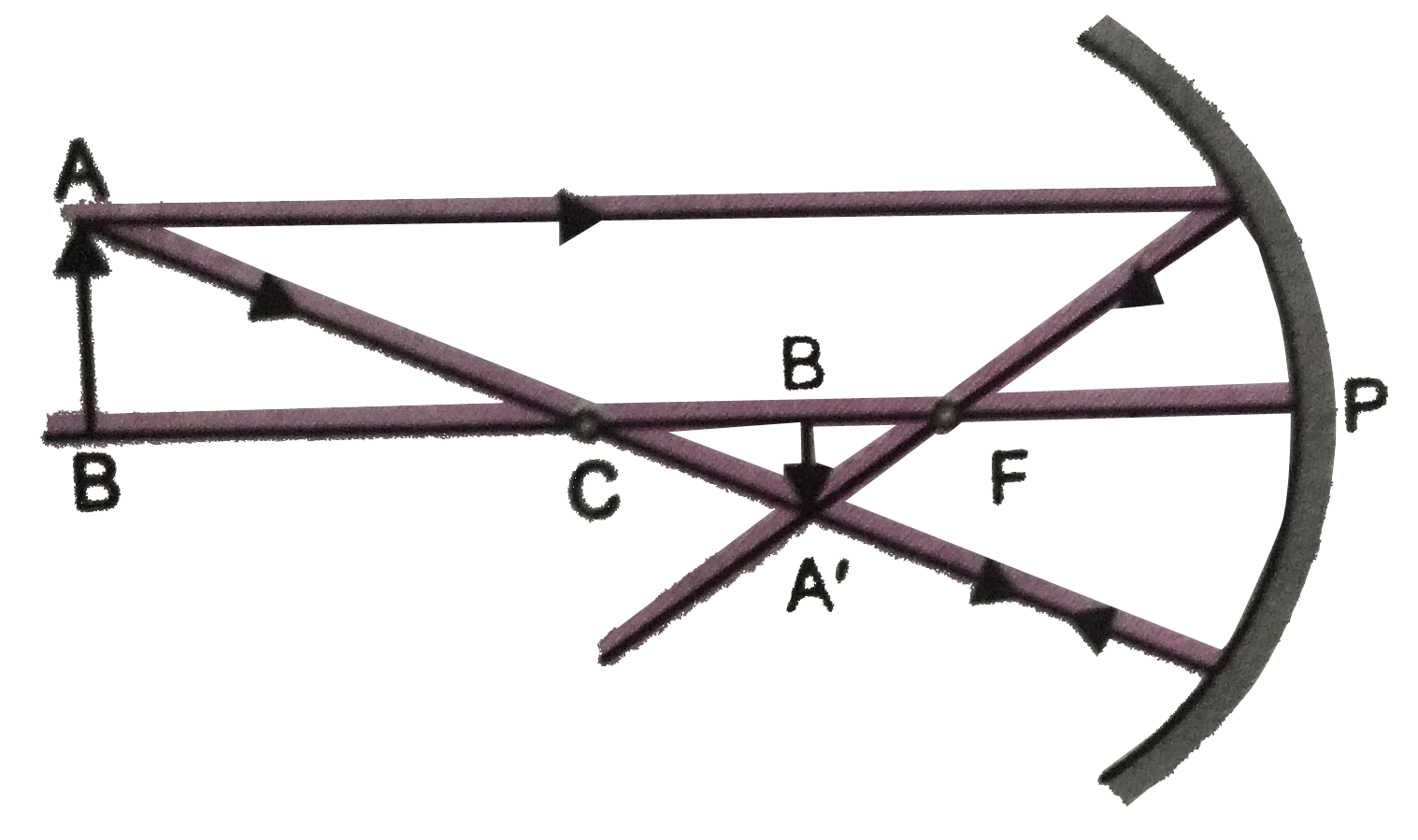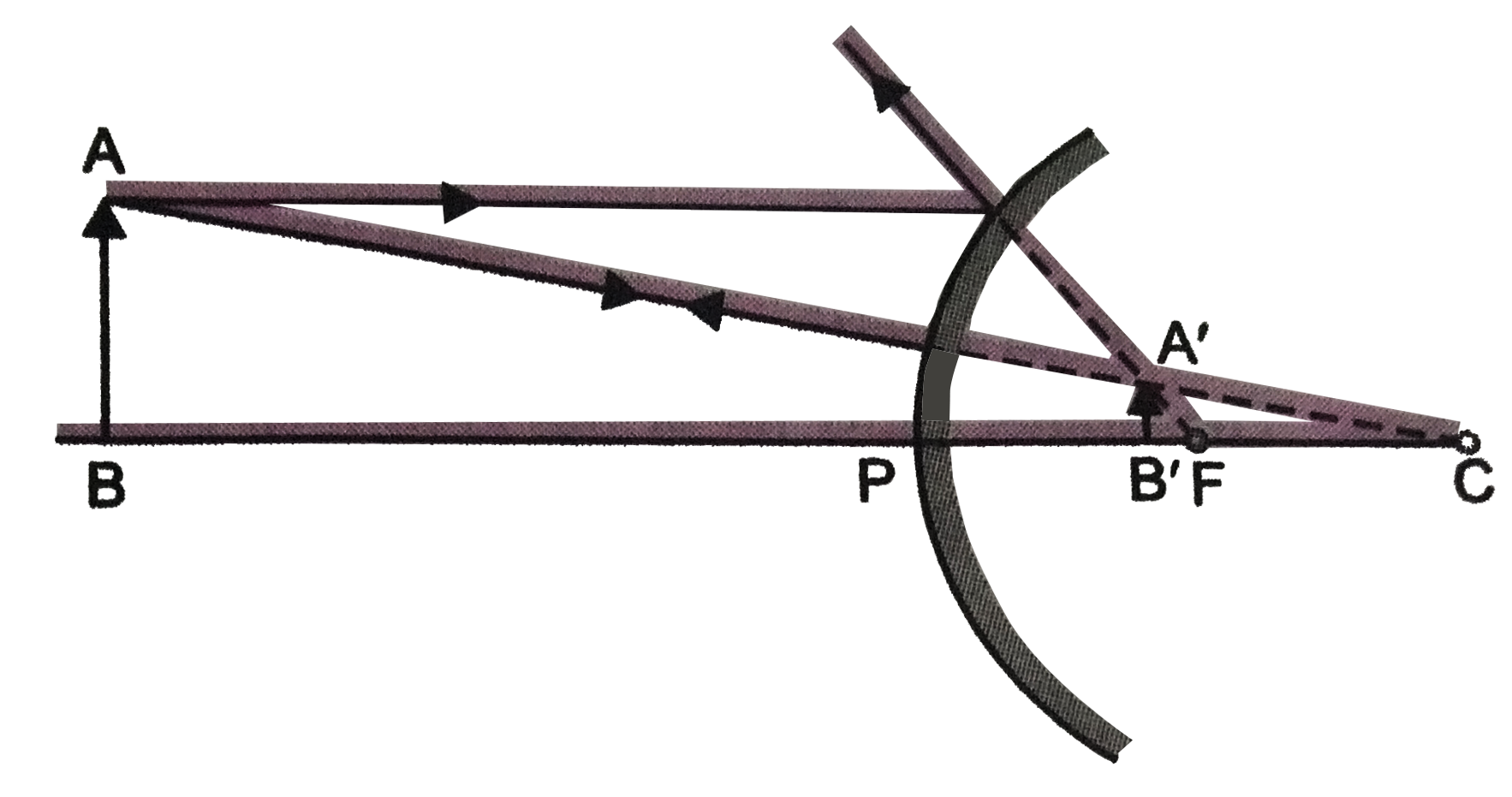Complete the following ray diagrams. State the size and nature of image formed in each case.

(a) As shown in fig. the image formed is real, inverted, smaller in size and located between F and C.

(b) As shown in Fig, the image formed is real, inverted, larger in size and located beyond C

(c ) As shown in Fig, the image formed is virtual, erect, smaller in size and located behind the mirror between P and F.

Topper's Solved these Questions
- REFLECTION AND REFRACTIONBook:PRADEEPChapter:REFLECTION AND REFRACTIONExercise:Short Q/A (3 marks)
Explore 35 Videos
- REFLECTION AND REFRACTIONBook:PRADEEPChapter:REFLECTION AND REFRACTIONExercise:long Q/A
Explore 7 Videos
- REFLECTION AND REFRACTIONBook:PRADEEPChapter:REFLECTION AND REFRACTIONExercise:long answer question
Explore 9 Videos
- MAGNETIC EFFECTS OF ELECTRIC CURRENTBook:PRADEEPChapter:MAGNETIC EFFECTS OF ELECTRIC CURRENTExercise:Mock Test
Explore 21 Videos
- SOURCES OF ENERGYBook:PRADEEPChapter:SOURCES OF ENERGYExercise:Mock Test
Explore 20 Videos
Similar Questions
Draw a ray diagram to show the position and nature of the image formed in the above case.
View Solution(a) An object is placed at the centre of curvature (c ) of a concave mirror. Draw the ray diagram to depict the position, size and nature of image formed.
(b) Find the focal length of a lens of power - 2.0 D. What type of lens is this ?
View Solution(i) Rohit claims to have obtained an image twice the size of the object with a concave lens. Is he correct? Give reason for your answer.
(ii) Where should an object be placed in case of a convex lens to form an image of same size as of the object? Show with the help of ray diagram, the position and nature of image formed?
(iii) With the help of ray diagram, illustrate the change in position, size and nature of image formed if convex lens in case of (ii) is replaced by a concave lens of same focal length.
View Solution(i) Rohit claims to have obtained an image twice the size of object with a concave lens. Is he correct? Give reason for your answer.
(ii) Where should an object be placed in case of a convex lens to form an image of same size as of the object? Show with the help of ray diagram the position and the nature of the image formed.
(iii) With teh help of ray diagram, illustrate the change in position, nature and size of the image formed if the convex lens in case of (ii) is replaced by concave lens of same focal length.
View Solution(a) Draw a labelled ray diagram to shwo the formation of image in a convex mirror when the object is at infinity. Mark clearly the pole and focus of the mirror in the diagram.
(b) State three characteristics of the image formed in this case.
( c) Draw diagram to show how a convex mirror can be used to give a large field of view.
View SolutionDescribe with the help of a ray diagram the nature, size and position of the image formed when an object is placed at infinity (considerable distance) in front of a convex lens. State three characteristics of the image so formed.
View SolutionDescibe with the help of a ray diagram the nature, size and position of the image formed when an object is placed in front of a convex lens between focus and optical center. State three characteristics of the image formed.
View SolutionDescribe with the help of a diagram, the nature, size and psition of the image formed when an object is placed beyound the centre of curvature of a concave mirror.
View SolutionDraw the course of a rays for tracing image of an object held between pole and principal focus of a concave mirror. State the position and nature of image formed.
or
Draw the course of rays for tracing image of an object held between optical centre and principal focus of a convex lens. State the nature of image formed.
View Solution(a) Draw ray-diagrams to show the formation of images when the object is placed in front of a concave mirror (converging mirror) :
(i) between its pole and focus
(ii) between its centre of curvature and focus
Describe the nature, size and position of the image formed in each case.
(b) State one use of concave mirror based on the formation of image as in case (i) above.
View Solution

